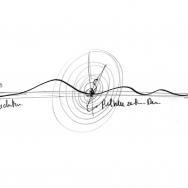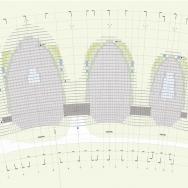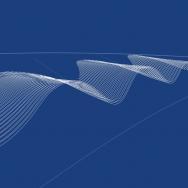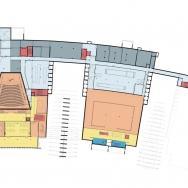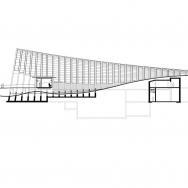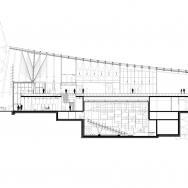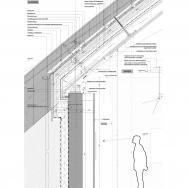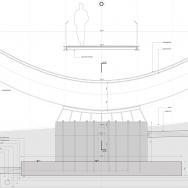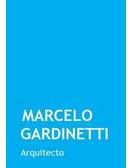“Paul Klee no merece un museo, sino un paisaje”. La reflexión de Renzo Piano respecto al Centro Paul Klee resulta exegética de la operación realizada en el diseño del museo, instituido como homenaje al artista Suizo. Un ejercicio donde el arquitecto opera sobre la arquitectura con la misma sutileza que el pintor lo hacía sobre la pintura. Porque Piano al construir el edificio, parodia la abstracción a la manera de Paul Klee.
Establece un monumento sutil, espontáneo y consistente, que reinterpreta la topografía del lugar, explorando los vividos matices de la naturaleza para incorporarlos al interior del museo en una explosión de luz y color no exenta de poesía. De esta forma, el diseño pretende consumar una operación topográfica natural. Enormes vigas sinusoidales establecidas rítmicamente en paralelo construyen tres pequeñas colinas de acero que se mimetizan con las superficies onduladas del sitio.
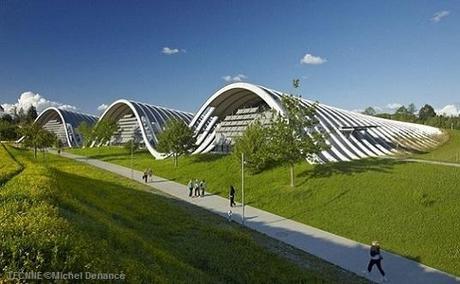
Para esta estratagema, ninguna viga es igual a la otra. Un ejercicio de manipulación dispone las vigas con distintos ángulos de inclinación, estableciendo siempre una altura diferente al centro del arco superior. En una maniobra sincrónica, el soterramiento de las ondulaciones inferiores permite reducir la altura para cubrir gran parte de la cubierta con la naturaleza, fundando una composición donde la cubierta se convierte en un terraplén de trigo y amapolas que propone en una misma gestión la vegetación como edificio. Este juego reduce el impacto de la arquitectura sobre la naturaleza sin dejar de manifestar la faena humana.
El ejercicio formal propuesto genera tres cuerpos decrecientes en tamaño que se encuentran vinculados por una calle peatonal que se abre paso entre las ondulaciones metálicas. En su recorrido, la calle va anexando sucesivamente espacios de estar, circulaciones verticales, pequeñas tiendas, una librería y una cafetería.
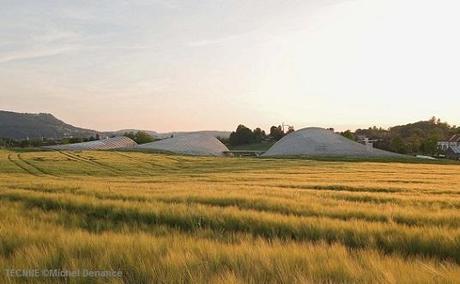
Cada ondulación responde a una función diferente. La primera es la de mayor superficie y el punto de acceso al edificio. Un vestíbulo articula la calle interna con las actividades previstas para este cuerpo: un auditorio para 400 personas y los talleres de arte para niños.
El volumen central aloja en su interior la colección permanente de Paul Klee, la mayor atracción del complejo. Sus muros están diseñados con paneles móviles, característica que permite emplazarlos de diferentes maneras, estableciendo una amplia variedad de espacios expositivos. Una serie de salas anexas de menor tamaño consienten realizar exposiciones temporales. El menor de los tres volúmenes fue consignado a funciones administrativas y un centro de investigación.
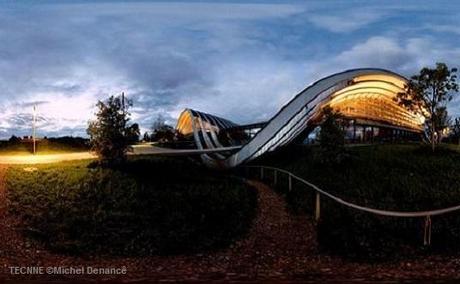
El diseño hace visible en el interior del edificio la estructura de acero, acabada por cielorrasos de abedul natural o pintado de blanco. Parasoles en la fachada controlan el ingreso de luz natural, que se difunde en el interior de las salas reflejado en pantallas traslúcidas para evitar el efecto perjudicial de la luz sobre las pinturas. Ranuras en el solado permiten la circulación de aire y favorecen la correcta ventilación.
Piano procura esculpir la naturaleza revalidando la topografía. Esta pretensión monopoliza una complejidad taxativa que excede la voluntad de erigir un museo para establecer un signo que evoca las sutiles composiciones del artista homenajeado.
Marcelo Gardinetti, agosto de 2013©
Dibujos: ©RPBW
Fotografias: ©Michel Denancé
TECNNE | Arquitectura y contextos
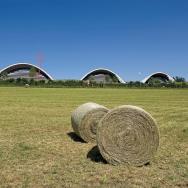


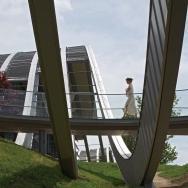
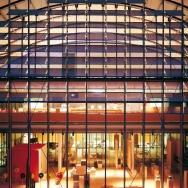

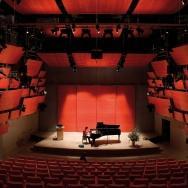

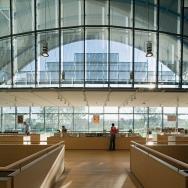
English version
“Paul Klee does not deserve a museum, but a landscape.” Renzo Piano’s reflection regarding the Paul Klee Centre is exegetical of the operation performed in the design of the museum, established in honor of the Swiss artist. An exercise which architect operates on the architecture with the same subtlety that the painter did on paint. For Piano to build the building, parody abstraction in the manner of Paul Klee.
Establishes a consistent subtle monument, spontaneous and reinterpreting the topography, exploring the vivid hues of nature for incorporation into the museum in an explosion of light and color, not without poetry. Thus, the design aims to consummate a natural topographic operations. Huge sinusoidal parallel beams laid rhythmically constructed steel three small hills that blend with the rolling surfaces of the site.
For this trick, no beam is equal to the other. An exercise in manipulation has beams with different angles of inclination, establishing always a different height in the center of the upper arch. In a synchronous maneuver, the burial of the lower undulations reduces the height to cover much of the deck with nature, founding a composition where the roof becomes a mound of wheat and poppies in same management propose vegetation as building. This game reduces the impact of architecture on nature while expressing human slaughter.
The proposed formal exercise generates three bodies in decreasing size are linked by a pedestrian street between the metal corrugations step opens. Along the way, the street will be successively appending spaces, vertical circulation, small shops, a library and a cafeteria.
Each ripple responds to a different function. The first is the largest area and the access point to the building. A lobby articulates the internal street with the activities planned for this body: an auditorium for 400 people and art workshops for children.
The central volume internally houses the permanent collection of Paul Klee, the main attraction of the resort. Its walls are designed with movable panels, which help to locate them in different ways, establishing a wide variety of exhibition spaces. A series of smaller adjoining rooms consenting make temporary exhibitions. The smallest of the three volumes was consigned to administrative functions and a research center.
The design is visible inside the steel structure building, finished ceilings for natural birch or painted white. Umbrellas at the front controlling the entry of natural light, which diffuses into the interior of the rooms reflected in translucent screens to prevent the detrimental effect of light on the paintings. Slots in the tiling allow air circulation and promote ventilation.
Piano seeks carve nature revalidating topography. This claim monopolizes an exhaustive complexity exceeds the willingness to build a museum to establish a sign that evokes the subtle compositions of the featured artist.
